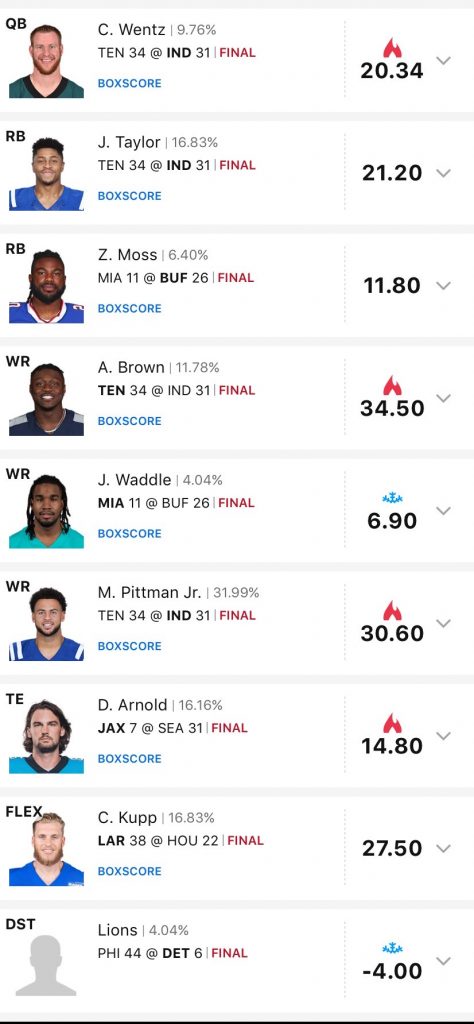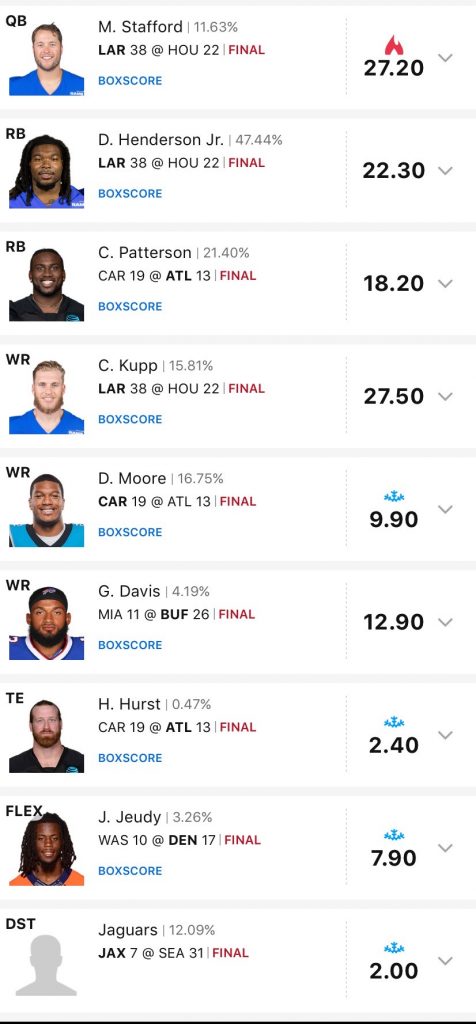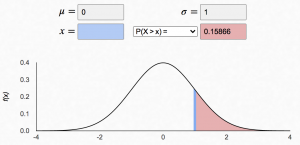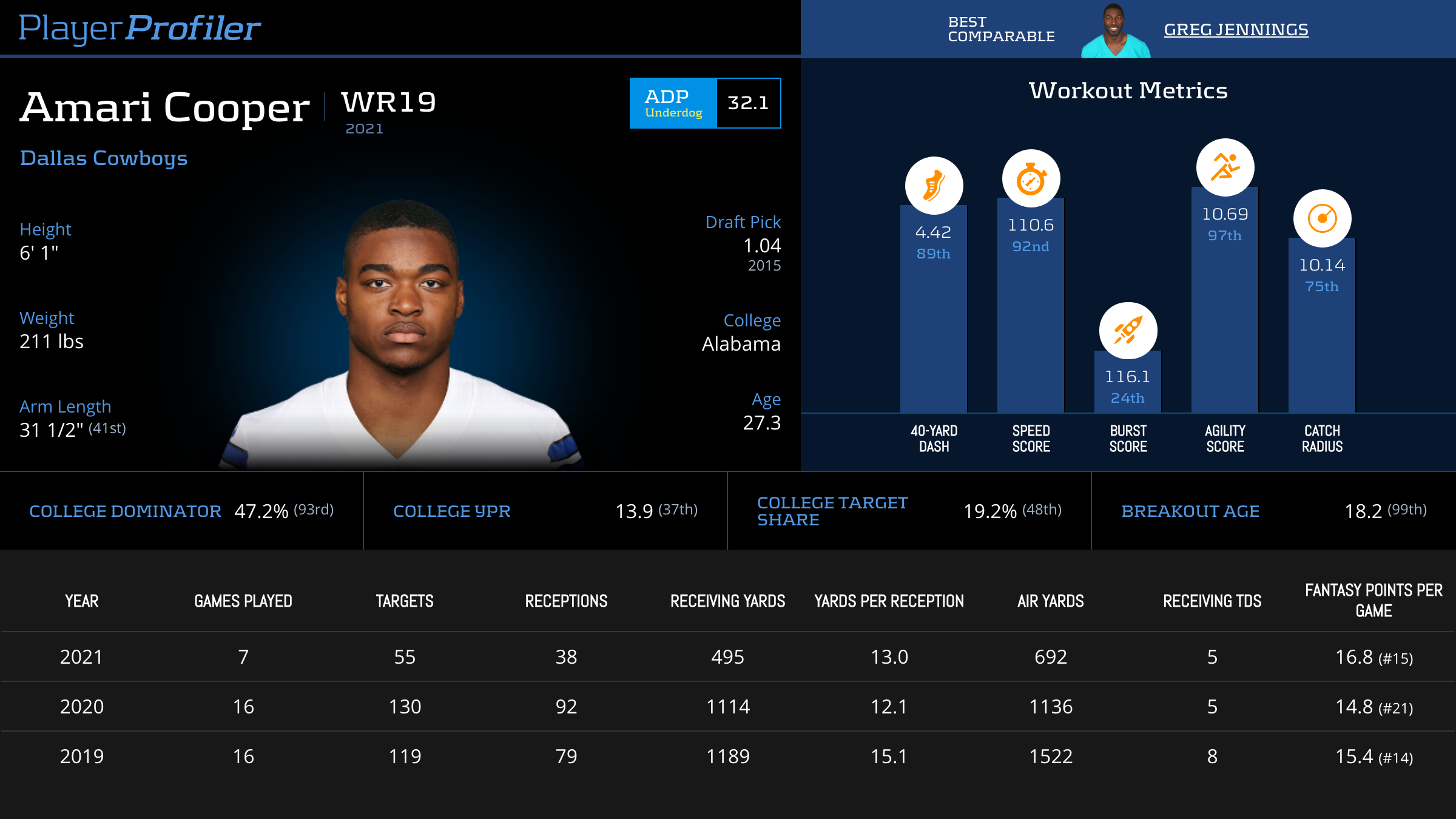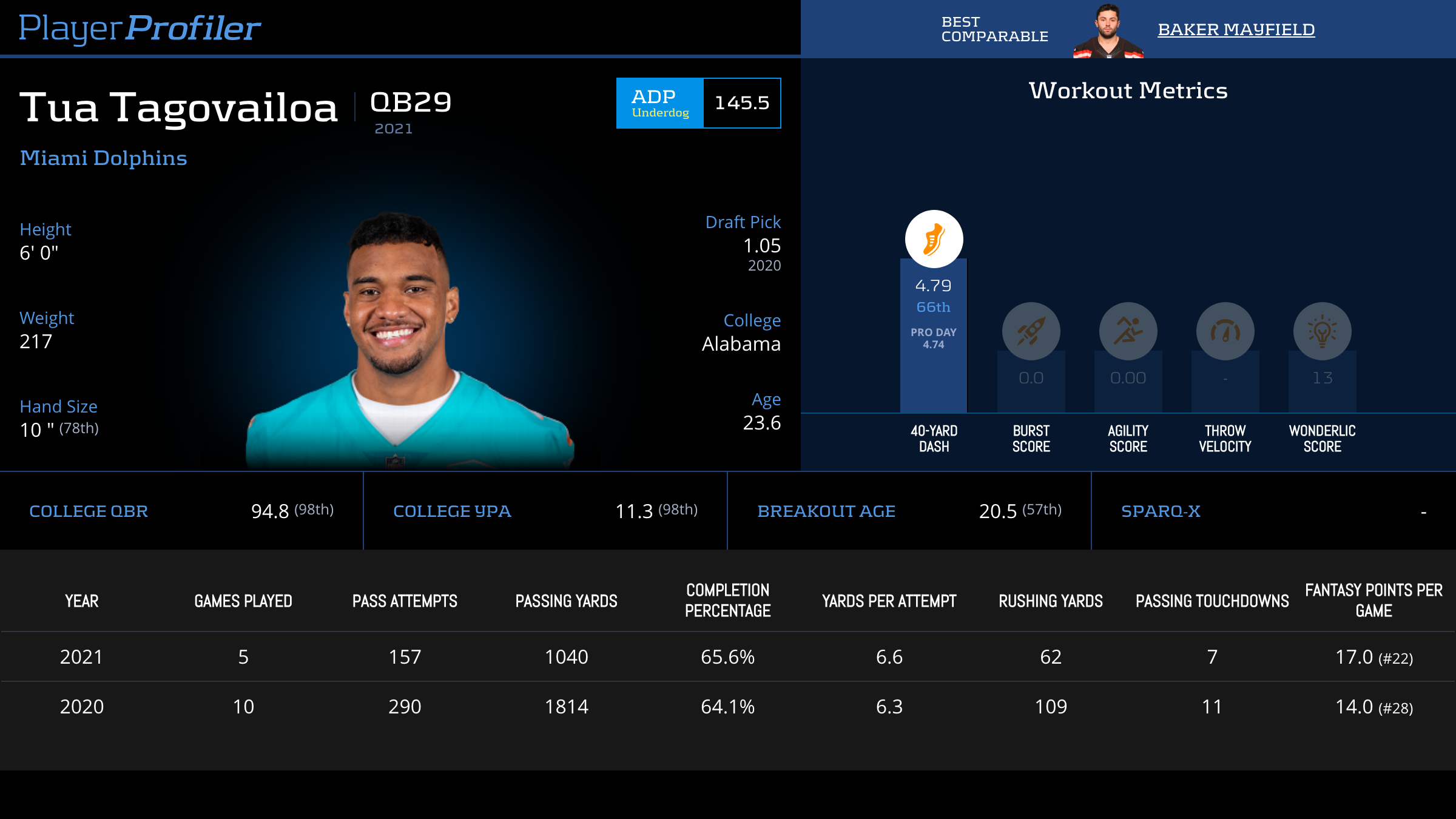What a day to write about football.
Odell Beckham is released. Aaron Rodgers is quoting Martin Luther King Jr. and championing medical advice from Joe Rogan. Nevertheless, here I sit at my desk charged with bringing you Week 9’s edition of The Pareto Principals.
There are more fireworks on your twitter timeline than Vegas predicts to appear on your NFL RedZone this Sunday. No game this weekend boasts a game total over 50 points which creates a wide open slate for us to attack. With a lack of clear target games, there is a lack of glaring leverage opportunities. Does this mean we simply resort to picking out the best plays? Or can we lean on other strategic levers to cultivate an edge? This will be the over-arching theme of my Week 9 preview.
A weekly note: This is not your typical DFS column. We rarely discuss matchups, nor do we debate the ‘best’ plays. This is a column about using game theory to find edges on the field not captured by projections. If this is your first time reading, I encourage you to check out my evergreen, introductory column which covers concepts I re-visit in the weekly editions.
The Pareto Principals: Guiding Principles For Limited Entry DFS
Week 8 Review
Let’s run through two lineup reviews this week as I had two strong finishes this week (one of which I will talk through), but also made two costly errors I want to acknowledge.
Lineup Review I: Close but No Carter…
Let’s start with the ‘good;’ my highest scoring lineup of the week. This team (163.64) finished 17th in a 297-person small field.
Generally, I think this was a sharp lineup with one error both in process and result.
Michael Pittman was the heaviest-rostered receiver on the slate, rising over 30-percent owned in small fields. The best approach to a player like that is to either fade him or correlate him. The Colts-Titans game was a convenient stack since there were only two skill-players heavily involved on each team. I decided to play Jonathan Taylor in the lineup because in a small field – as discussed last week – you don’t need to access the same degree of ceiling optimization. I did not need Taylor to to be the highest scoring back to win this tournament. I just needed him to outscore the much higher rostered, and equally priced, D’Andre Swift.
The inflection point came at the other running back slot. I knew Darrell Henderson was the best projected play on the slate. I played Henderson or Swift in nearly all my lineups this week, but had a co-existing rule to play a Ram in every lineup. To avoid pairing every Cooper Kupp with Swift, I opted for a few alternate running back constructions around chalk stacks. I was torn between Michael Carter and Tee Higgins (with Browns DST), or Zack Moss and Jaylen Waddle (with Lions DST) as my secondary correlation. Obviously I picked the wrong door, as my alternate lineup would have placed 2nd.
I opted for the Moss build as a leverage point off Josh Allen stacks, which I expected to be popular in a small field. Allen wound up just 13-percent owned; popular but not prohibitive. Given the leverage I was already generating off Swift and Henderson, it was un an unnecessary leverage attempt in this small a field.
Lineup Review II: Levelling myself
This lineup – which did not cash – made me feel like a total idiot.
In last week’s column, I predicted D.J Moore to be under-owned, and well.. not in this contest. In larger field entries, Moore was generally between 6-10-percent rostered; half the ownership of A.J. Brown, as I projected. But in this contest – a 215 person single entry field – many of us had the same idea. Moore ended up 17-percent rostered; the fifth highest of any receiver, and higher than Brown, who I preferred straight up with a lower price.
In this lineup, I made a similar play as above; pick a projected high-scoring offense and attempt to capture every touchdown. The Rams hit, and had I projected Moore’s ownership more accurately I would have re-worked this team to either include Brandin Cooks as a bring back, or opted for a Pittman-Brown secondary correlation. This was my highest stakes lineup, and playing Moore and Cordarelle Patterson at double the cumulative ownership I projected for them made me feel sick the second the cards turned over.
It’s easy to say this in hindsight when the Pittman-Brown chalk hit, but given the small field, my unique stack of the Rams, and a commitment to fading Swift, this was a poorly constructed lineup on a process level.
Should I have predicted the level of ownership on Moore and Patterson? That’s harder to say. There’s higher ownership variance in small fields, but one takeaway I’d have is to weight more heavily the ‘steam’ of contrarian plays touted by content-creators in higher-stakes, smaller field contests. In my column I made the case for Moore and Diontae Johnson as under-owned plays. Johnson held up, but I saw a similar case made for Moore around the industry and it was acted on heavily among these higher-stakes, smaller field players who are more wired into content.
In sum, I have done lineup reviews in the past where I explain point-costing decisions as the result of good process gone wrong. I wanted to balance that with two situations in which my ‘bad luck’ was self-inflicted. All in all, it was a winning week with valuable lessons were learned.
Week 9 Preview
Let’s switch gears out of reverse, and look forward to a wide-open Week 9 slate.
Structural Overview
This week’s slate projects to be fairly flat in overall ownership – especially at the game level. For that reason, the bulk of my preview will be regarding general strategy as you can apply similar ideas to a number of similarly-projecting games.
Do you remember the 68-95-99.7 Rule? In a series discussing strategic synergies between DFS and Best Ball, I discussed how to incorporate this rule to optimize vs. ADP. Today I want you think about it in terms of over-unders.
The standard deviation of a game total ranges between 12-14 points. As you can see below, that range is fairly stable at all totals from low-scoring to high-scoring games.
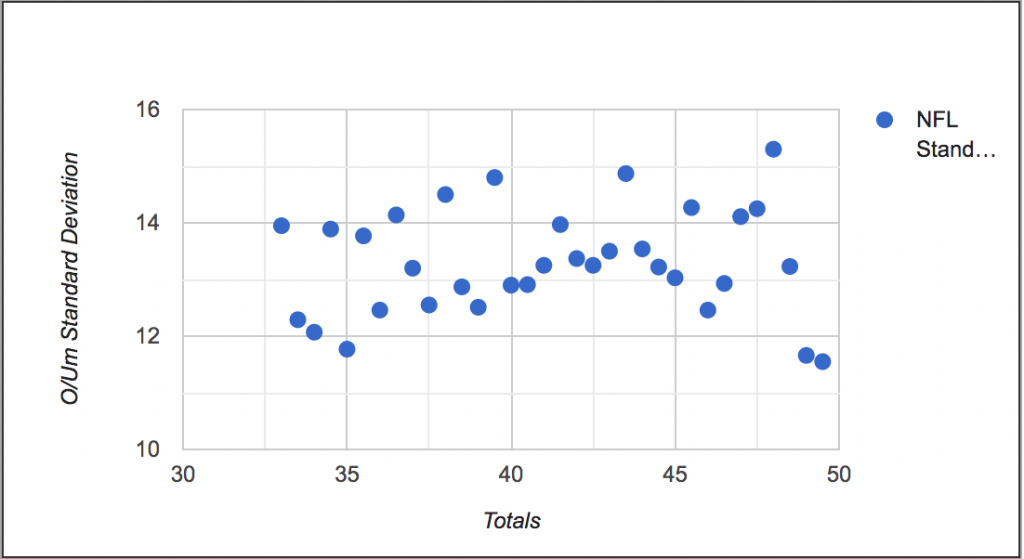
Chart sourced from Boyds Bets
The 68-95-99.7 Rule tells us within a normal distribution, a game should hit a full standard deviation OVER the total, roughly 16-percent of the time; approximately 1 in 6.
How can we use this information to win in DFS?
The unofficial motto of this column is profiting from uncertainty. Games with low totals are less appealing to stack because it is difficult to project three-four players from one game hitting a tournament winning ceiling in a poor game environment. But where others see doubt, we see opportunity. Statistically, of the 11 games on this slate, two are likely to hit two touchdowns over its game total. If that’s hard to imagine, just look at Thursday Night Football!
The odds of picking the correct game to stack are substantially better than picking a series of uncorrelated players with tournament winning ceilings. Slates with low totals and flat ownership are actually when correlation becomes most important.
The Three Levers of DFS
This is a concept many players use, but I first heard vocalized by Jordan Cooper; creator of the Theory of DFS audio guide and podcast. DFS strategy is a combination of three levers.
(i) Projection: does the player project to score highly relative to his salary?
(ii) Correlation: do the players in your lineup possess correlated projections to boost the likelihood of reaching a joint ceiling?
(iii) Leverage: Are you creating leverage on the field by playing and/or not playing certain players?
The flatter the ownership, the harder it is to create effective leverage. Ezekiel Elliott currently projects among the highest rostered running backs on the slate, but it’s unlikely he eclipses 30-percent. As well, Amari Cooper projects among the top-rostered receivers on the slate. Playing one does not create leverage on the other. If CeeDee Lamb is healthy, he profiles as a potential leverage play, but one who projects quite poorly for his price, and injury concerns. This is hardly comparable to last week; when one could have played Robert Woods or T.J. Hockenson to generate significant leverage of Darrell Henderson or D’Andre Swift.
When one lever is reduced, you have to dial up the others. The flatter the ownership, the less risk you take on by relying on projection, and the more beneficial it is to maximize correlation.
If there is one major leverage opportunity this week, it’s in the Chiefs-Packers game. At present (I fear this may change by lock), Tyreek Hill is projected for nearly triple the ownership of Travis Kelce. On a slate with plenty of chances to spend down, I am more than willing to get back in on Kelce, who always possesses slate breaking upside at tight end.
The Necessity of Ceiling
If you read my columns regularly, the prioritization of ceiling over median is not a new concept. It is worth a reminder how key this is as it relates to popular receivers. Wide receiver is both the highest ceiling and highest variance position, which makes playing a high-owned receiver uncorrelated a poor choice.
If the player hits, you derive the same benefit as a large portion of the field, but miss the chance to maximize the benefit with correlation. Most importantly, the FOMO with these receivers is often over-stated; especially in the mid-range.
This season only one receiver has made the optimal lineup on DraftKings priced above $5,000 with under 30 points.
Is Amari Cooper underpriced this week at $5,700? absolutely. Will he be in my cash lineup? Certainly. But his inefficient salary does not make him any more likely to post 30-plus points. Fading a 20-percent (or higher?) rostered Cooper could eliminate a high percentage of the field should be bust, and even if he hits above his median, it’s unlikely to truly bury you.
Don’t Give in to FOMO
I have no strong convictions on which games to target this week, but as a person who plays roughly 20 lineups each week, it is key to avoid playing everything and winning nothing.
Especially on a nondescript slate, one can fall into the trap of making your exposure too wide, and struggling to realize your edge should you find one. I will be targeting a small pool of games, hoping I pick the right options, and giving myself as many shots as possible to maximize my ceiling should one hit big.
Based on the flurry of injury news it is difficult to grasp where ownership will ultimately settle at a game level. One priority spot – if ownership remains under control – will be the Miami passing game against Houston. Tua Tagovailoa has been a strong fantasy option in every good matchup thus far and Houston presents the best there is. I love prioritizing pass-heavy offenses as heavy favourites as they are less prone to Game Script.
One more team I plan to prioritize is the Chargers. Justin Herbert and his weapons were under-owned for their projection last week but laid an egg. This week Austin Ekeler projects among the top-owned running backs, but few are playing the passing game. The Chargers are just (1.5) point favourites in a 49.5-total game, which sets up well for a pass-first offense against a poor defense. If the Chargers find offensive success against the Eagles, I doubt it comes only via Ekeler. Herbert double-stacks would be my highest played lineup concept if I were to submit entries at the time of writing.
The Final Word
I struggle sometimes with this column to find the balance between actionable advice and scalability. My largest apprehension in writing a DFS column is the worthlessness of a ‘plays of the week’ article just 48 hours after writing. Even more, I fear giving out plays on a Friday I won’t even tout on Sunday morning should ownership change.
I hope you can apply the concepts discussed in today’s rendition to your Week 9 lineups and beyond regardless of who you prioritize in your core plays. As always, thank you for reading and good luck!

